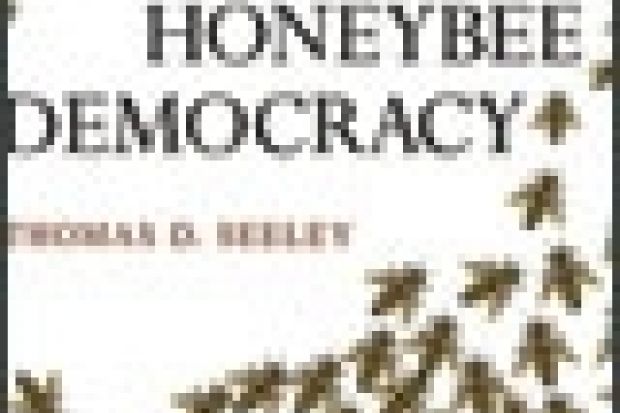We have been taught since childhood that honeybees are industrious, altruistic and, of course, the producers of delicious sweetness. Here, Thomas Seeley reveals yet another subject in which the little creatures can instruct us: democracy.
Honeybee Democracy is written almost like a detective story. It begins by considering research by a German scientist, Martin Lindauer, 60 years ago, followed by a discussion of Seeley's own doctoral study and, after a 25-year gap, his more recent attempts to solve the puzzles of swarming. As a fellow scientist, I have attended his lectures on decision-making in swarming and read many of his papers on the subject, but it is satisfying to see all the studies come together in a single book. Rather than presenting a dry review of his findings, Seeley intertwines them with his thought processes, anecdotes and generous appraisals of students and fellow scientists.
His skill in writing a book with so much science in such simple language is admirable. Even a non-beekeeper can understand what he is trying to convey. The photographs are beautiful and the illustrations elegant.
Evident throughout is Seeley's immense love for his study subjects, even to the point of being a bit sappy. When he recalls feeling "sad to have killed a whole colony", we see, too, that his strong curiosity propelled him to do so, because he was "also excited, knowing that (he) was the first human to describe in detail the natural homes of honeybees".
Later, while referring to an experiment by other researchers that tricked swarms into taking off with no real queens, he says that to this day he feels "sadness for the orphaned swarms produced in this otherwise superb experiment".
After two introductory chapters, Honeybee Democracy deals exclusively with the swarming process. We still do not know the precise conditions that trigger it, nor the process by which some workers decide to stay and others leave. But Seeley reveals almost everything else about swarming. What features do bees look for when searching for a new home? How do scouts measure the size of a cavity? (How scouts "vote" for the best site among many candidates is the main focus of the book: the process gives it its title.) How do they eventually prepare for the lift-off to the new site from the temporary cluster? And how are 15,000 bees guided there by a few hundred scouts?
In the final chapter, Seeley suggests five lessons we could learn from bees.
• Compose a decision-making group of individuals with shared interests. Here bees have a higher stake than us: all members of a colony are related (sisters) and nobody can survive without the group.
• Minimise the leader's influence on the group. Here we humans have much to learn.
• Seek diverse solutions to the problem. Humans realised only recently that diversity is good for a group.
• Update the group's knowledge through debate. Here again, bees are superior to us, as each scout's "dances" become less effective with time, no matter how good a new site is, while stubbornness can lead humans to argue forever.
• Use quorums to gain cohesion, accuracy and speed. Impressively, bees came up with this concept long before the Greeks.
As a departmental chair at Cornell University, Seeley says, he applies these principles at faculty meetings with great success.
Practising democracy. Brits do it; bees do it. I only hope that one day the country where I grew up will do it, too.
Honeybee Democracy
By Thomas D. Seeley
Princeton University Press
280pp, £20.95
ISBN 9780691147215
Published 25 October 2010
Register to continue
Why register?
- Registration is free and only takes a moment
- Once registered, you can read 3 articles a month
- Sign up for our newsletter
Subscribe
Or subscribe for unlimited access to:
- Unlimited access to news, views, insights & reviews
- Digital editions
- Digital access to THE’s university and college rankings analysis
Already registered or a current subscriber? Login
